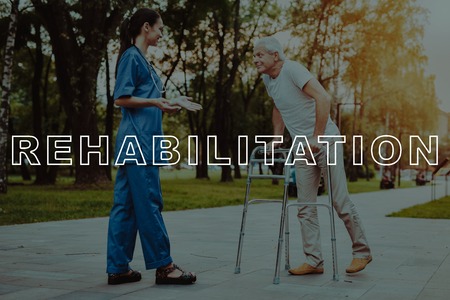Introduction to Herbal and Botanical Supplements in the UK
Herbal and botanical supplements have occupied a distinctive place in British society for centuries, evolving from traditional remedies into products regulated within modern healthcare frameworks. Historically, the British Isles have been home to a rich tapestry of herbal knowledge, with plants such as elderflower, nettle, and dandelion used in folk medicine for their perceived therapeutic properties. This longstanding tradition has shaped contemporary attitudes, where herbal and botanical preparations are often regarded as complementary approaches to conventional medicine. In the context of rehabilitation practice, these supplements are increasingly considered for their potential roles in supporting recovery and enhancing wellbeing. Key definitions distinguish “herbal” products—derived primarily from leaves, flowers, roots, or seeds—from “botanical” supplements, which may encompass a broader range of plant-based substances. The regulatory landscape in the UK is guided by both national and European directives; most notably, the Medicines and Healthcare products Regulatory Agency (MHRA) oversees the safety, quality, and marketing claims of herbal supplements under the Traditional Herbal Registration (THR) scheme. This ensures that products available to British consumers meet minimum standards of efficacy and labelling accuracy. As public interest in natural therapies continues to grow, understanding the historical roots and current regulatory framework of herbal and botanical supplements is essential for practitioners seeking to integrate these options responsibly into rehabilitation settings.
2. Current Trends in Rehabilitation Practice
In recent years, rehabilitation practice in the UK has undergone significant evolution, reflecting both advancements in medical science and shifting societal attitudes towards health and wellbeing. The contemporary British rehabilitation landscape is characterised by a multidisciplinary approach, where physiotherapists, occupational therapists, speech and language therapists, psychologists, and other healthcare professionals work collaboratively to tailor interventions to individual patient needs. This holistic framework increasingly recognises the value of integrative and complementary therapies alongside conventional biomedical treatments.
Integrative rehabilitation considers the person as a whole—addressing not only physical recovery but also psychological resilience and social reintegration. The National Health Service (NHS) and private sector providers are progressively adopting models which incorporate complementary modalities such as acupuncture, mindfulness-based stress reduction, yoga therapy, and, notably, the use of herbal and botanical supplements. These approaches are particularly evident in settings dealing with long-term conditions, chronic pain management, neurological rehabilitation, and post-surgical recovery.
The table below summarises key trends observed in modern British rehabilitation practice:
| Rehabilitation Approach | Description | Integration of Complementary Therapies |
|---|---|---|
| Multidisciplinary Teams | Collaborative care involving various health professionals | Commonly includes dietary advice and stress management techniques |
| Patient-Centred Care | Treatments tailored to individual preferences and lifestyles | Encourages patient input on use of herbal supplements |
| Holistic Interventions | Focus on physical, emotional, and social wellbeing | Embraces therapies such as mindfulness and botanicals for overall health |
This shift towards integrative care aligns with growing public interest in natural remedies and wellness strategies that go beyond pharmacological solutions. In response, regulatory bodies such as the British Herbal Medicine Association (BHMA) have promoted evidence-based guidance for incorporating botanicals into clinical practice. However, uptake varies across regions and institutions, depending on practitioner expertise, patient demand, and organisational policy.
Overall, the current trend in UK rehabilitation is one of cautious openness: while conventional therapies remain foundational, there is an increasing willingness to explore how herbal and botanical supplements may complement established protocols—so long as their efficacy and safety are supported by credible evidence.

3. Evidence Base for Herbal and Botanical Interventions
The integration of herbal and botanical supplements into British rehabilitation practice requires a nuanced understanding of the current scientific and clinical literature. As the use of such interventions becomes increasingly popular among patients seeking holistic approaches, it is vital to critically examine both their efficacy and safety within rehabilitation settings. Recent systematic reviews and meta-analyses have evaluated a variety of botanicals—such as turmeric, ginkgo biloba, and arnica—for their potential roles in pain management, inflammation reduction, and functional recovery. However, the evidence remains mixed: while some randomised controlled trials (RCTs) report modest benefits in specific contexts, others highlight inconsistencies in outcomes or methodological limitations.
From a theoretical perspective, phytochemicals present in these supplements may exert anti-inflammatory or neuroprotective effects relevant to rehabilitation. Yet, the translation of these findings into clinical benefit often faces challenges due to variability in supplement quality, dosing, and patient populations. Importantly, national regulatory frameworks—such as those enforced by the Medicines and Healthcare products Regulatory Agency (MHRA)—ensure that only products meeting certain safety standards are available on the UK market. Nevertheless, adverse events, ranging from mild gastrointestinal upset to serious herb-drug interactions, have been documented in clinical case reports.
It is also worth noting that most existing studies have focused on adjunctive use of herbal supplements rather than as standalone therapies. Consequently, robust evidence supporting their effectiveness as primary interventions in British rehabilitation practice is lacking. Ongoing research efforts are needed to establish clear guidelines regarding indication, dosage, duration, and monitoring requirements for safe incorporation. Until more definitive data are available, clinicians should adopt a cautious yet open-minded approach—balancing empirical evidence with patient preferences and individual risk profiles.
4. Commonly Used Supplements in British Rehabilitation
Within the context of British rehabilitation practice, a number of herbal and botanical supplements have established themselves as both traditional and evidence-informed choices. Their adoption is influenced by a blend of historical usage in the UK, current clinical trends, and the regulatory environment. This section provides an analysis of the most frequently employed products, their specific roles in rehabilitation, preferred dosage forms, and traditional associations within British culture.
Overview of Popular Herbal and Botanical Products
| Supplement | Traditional Use in the UK | Main Rehabilitation Role | Common Dosage Forms |
|---|---|---|---|
| Arnica montana | Folk remedy for bruises and sprains | Pain relief, reduction of swelling post-injury | Creams, gels, ointments |
| Turmeric (Curcuma longa) | Increasingly popular due to anti-inflammatory reputation | Adjunct for chronic joint pain and inflammation management | Capsules, tablets, powders |
| Devil’s Claw (Harpagophytum procumbens) | Brought into UK from European herbal tradition | Support for musculoskeletal disorders and lower back pain | Tablets, tinctures |
| St John’s Wort (Hypericum perforatum) | Longstanding use for mood enhancement in folk medicine | Mood support during long-term rehabilitation or chronic illness adjustment | Tablets, capsules, teas |
| Echinacea spp. | Traditionally used for immune support during convalescence | Enhancement of recovery post-illness or surgery through immune modulation | Tinctures, capsules, teas |
| Ginger (Zingiber officinale) | Culinary staple with medicinal reputation for digestion and inflammation in Britain | Nausea management during medication regimens; anti-inflammatory adjunct in musculoskeletal rehab | Capsules, teas, fresh root preparations |
Cultural Context and Traditional Associations
The use of these supplements is shaped by a distinctly British approach to herbalism—one that often values pragmatic outcomes over purely traditional doctrine. For instance, arnica cream is a mainstay in many British households for minor injuries and is commonly recommended by physiotherapists for acute soft tissue trauma. Similarly, turmeric has gained prominence via integration into mainstream wellness culture rather than longstanding native tradition.
Dose Forms Preferred by British Practitioners and Patients
The most popular dosage forms reflect a preference for ease of use and local availability. Topical applications such as creams and gels are favoured where direct action is desired (e.g., arnica), while capsules and tablets provide convenience and standardisation for systemic effects (e.g., turmeric or devil’s claw). Teas remain popular among older generations or those seeking a more traditional experience.
The Balance Between Tradition and Evidence in Product Selection
British rehabilitation practitioners tend to select products that balance historical usage with emerging scientific validation. While some choices are rooted in centuries-old folk traditions—like St John’s wort for mood—others are adopted primarily due to contemporary research supporting their efficacy or safety profiles.
5. Patient Perspectives and Cultural Considerations
Understanding the attitudes of British patients towards herbal and botanical supplements is essential for their effective integration into rehabilitation practice. In the UK, public perceptions of herbal remedies are shaped by a blend of tradition, media influence, and evolving health trends. For many, these supplements are viewed as natural alternatives to conventional medicine, often associated with holistic well-being and fewer side effects. However, there remains a degree of scepticism regarding their efficacy and safety, influenced by both scientific discourse and regulatory warnings.
Cultural Influences on Herbal Supplement Use
The UKs multicultural society brings together diverse beliefs and practices regarding health. Some communities have long-standing traditions of using botanicals as part of daily healthcare, while others may approach such remedies with caution or disinterest. The resurgence of interest in complementary therapies among younger generations has further diversified patient perspectives. This variation highlights the importance of recognising individual backgrounds when discussing supplement use in rehabilitation settings.
Public Perceptions and Media Representation
Media coverage plays a significant role in shaping public opinion about herbal supplements in Britain. While some outlets highlight positive testimonials or emerging research, others focus on adverse events or lack of regulation. Such mixed messages can lead to confusion or hesitancy among patients, underlining the need for clear, evidence-based communication from healthcare professionals.
Communication Between Patients and Providers
Effective communication between patients and rehabilitation providers is crucial when considering the use of herbal and botanical supplements. Many patients do not routinely disclose their use of such products, either due to perceived stigma or the assumption that it is irrelevant to their care. Healthcare professionals should foster an open, non-judgemental dialogue to ensure safe practice and support informed decision-making. By acknowledging cultural values and individual preferences, providers can build trust and facilitate collaborative care that respects the place of herbal supplements within British rehabilitation practice.
6. Regulatory and Professional Guidelines
Within the United Kingdom, the use of herbal and botanical supplements in rehabilitation practice is subject to a robust legal and professional framework, designed to safeguard patient safety while supporting evidence-based integrative care. This regulatory landscape is shaped by several statutory bodies and professional guidelines that both healthcare practitioners and patients must observe.
Legal Frameworks Governing Herbal Supplements
The principal legal instrument governing herbal products in the UK is the Human Medicines Regulations 2012, which incorporates directives from both national and European legislation. Under this framework, herbal medicinal products must be registered under the Traditional Herbal Registration (THR) scheme overseen by the Medicines and Healthcare products Regulatory Agency (MHRA). Only those products meeting specific safety, quality, and labelling standards are permitted for sale, with clear stipulations regarding their use in self-limiting conditions rather than complex rehabilitation scenarios.
Role of Statutory Bodies
The MHRA plays a central role in monitoring, licensing, and regulating herbal supplements. Additionally, the Food Standards Agency (FSA) oversees the marketing of certain botanical supplements classed as food products. Both agencies work collaboratively to ensure that any claims made about these supplements are substantiated and do not mislead consumers or practitioners.
Professional Guidance for Rehabilitation Practitioners
Practitioners operating within rehabilitation settings are further guided by professional codes issued by organisations such as the Chartered Society of Physiotherapy (CSP), British Dietetic Association (BDA), and Health and Care Professions Council (HCPC). These bodies underscore the importance of informed consent, transparency regarding supplement use, and comprehensive documentation. They also advocate for practitioners to remain abreast of current evidence regarding efficacy, potential interactions with prescribed medications, and contraindications relevant to specific patient populations.
Best Practice Recommendations
UK-specific best practice emphasises multidisciplinary collaboration when considering herbal and botanical supplements in rehabilitation plans. Practitioners are encouraged to conduct thorough risk assessments, consult authoritative resources such as NICE guidelines where available, and engage in open dialogue with patients about both benefits and limitations. Ultimately, adherence to statutory regulations and professional guidance is critical to maintaining high standards of patient care while integrating herbal approaches within mainstream rehabilitation frameworks.
7. Barriers and Opportunities for Integration
Despite the increasing interest in herbal and botanical supplements within British rehabilitation practice, several barriers hinder their seamless integration into mainstream care. A critical challenge lies in the limited evidence base; while traditional use is well documented, rigorous clinical trials demonstrating efficacy and safety in rehabilitation settings remain sparse. This scientific gap fuels scepticism among healthcare professionals who are trained to rely on evidence-based protocols. Regulatory ambiguity further complicates matters, as the classification of many botanicals as food supplements rather than medicines leads to inconsistent quality control and standardisation.
Another notable barrier is the lack of formal education on herbal medicine within most allied health curricula in the UK. Rehabilitation specialists may feel ill-equipped to advise patients or integrate these therapies into multidisciplinary care plans, resulting in a cautious or dismissive stance towards such interventions. Additionally, communication gaps between conventional practitioners and complementary therapists can impede collaborative patient management, potentially leading to fragmented or conflicting advice.
However, there are promising opportunities for greater integration. Increasing public demand and positive anecdotal experiences are encouraging more research into specific botanicals relevant to musculoskeletal recovery, pain management, and neurological rehabilitation. Initiatives by professional bodies to develop guidelines for safe use, alongside calls for higher regulatory standards, could enhance practitioner confidence and patient safety.
Moreover, fostering inter-professional dialogue through joint training programmes and shared case conferences would help bridge knowledge gaps and build mutual respect between conventional and complementary practitioners. Advances in pharmacognosy and the application of modern analytical techniques offer the potential for better quality assurance and clearer dosage recommendations, addressing some of the prevailing concerns over safety and consistency.
Looking forward, the future of herbal and botanical supplements in British rehabilitation practice will likely depend on a balanced approach—one that acknowledges traditional wisdom but insists upon robust scientific validation. By systematically addressing educational, regulatory, and research challenges, the sector can harness the full therapeutic potential of botanicals within a culturally relevant and clinically responsible framework.

